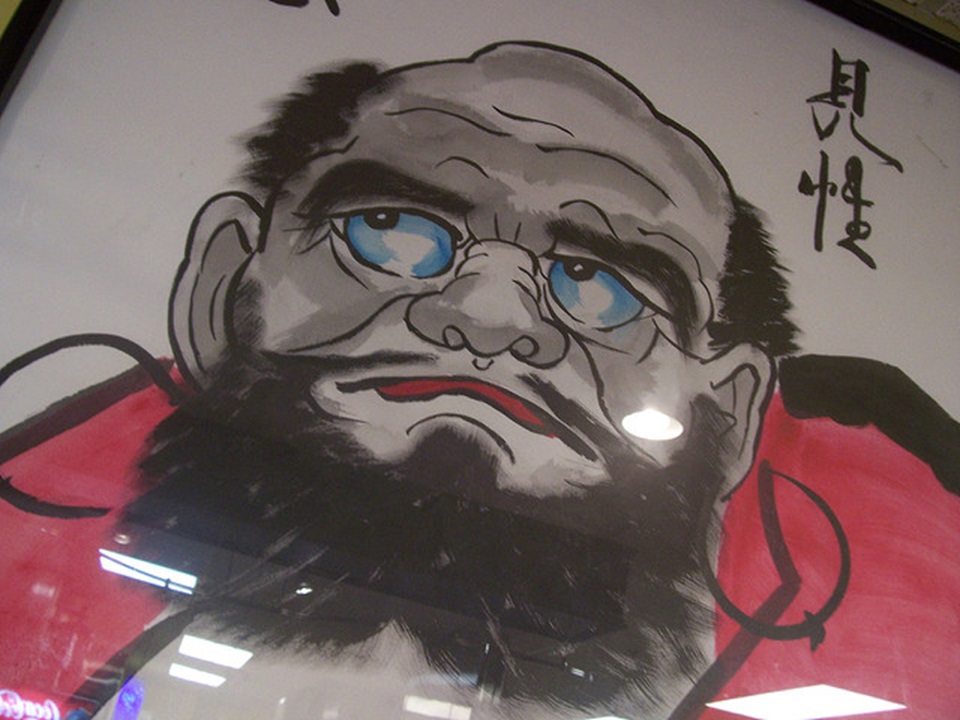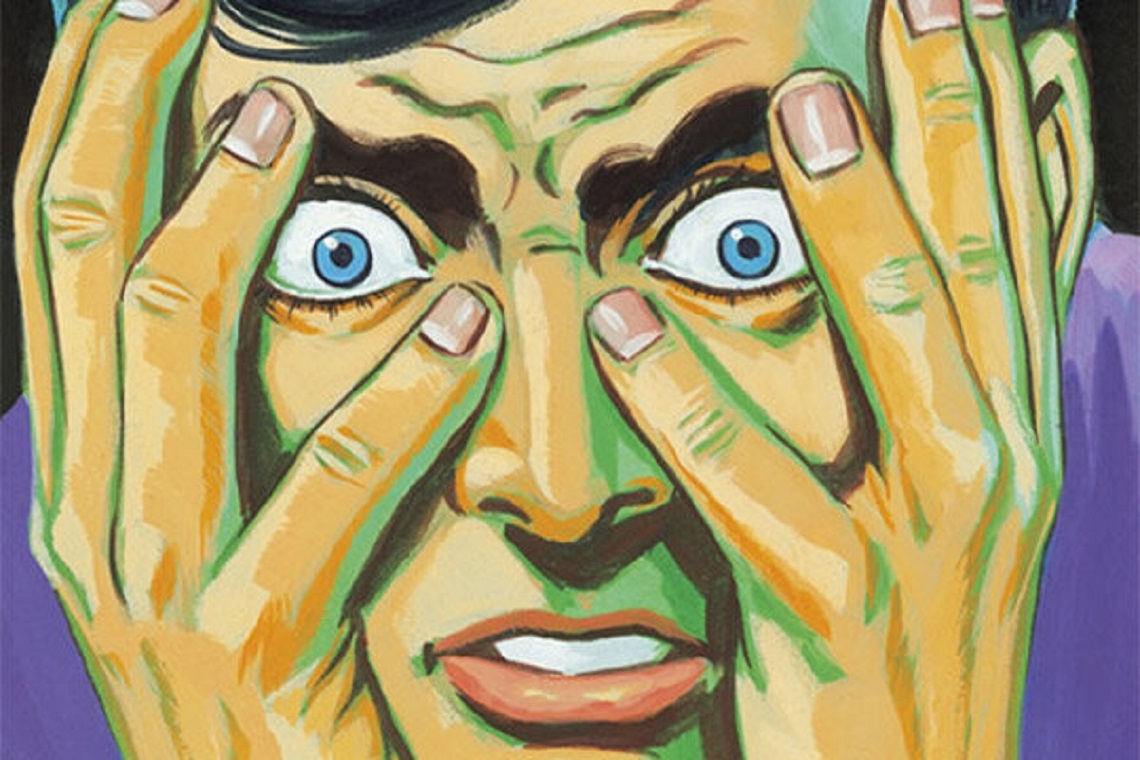The most intriguing question of all is, ‘What is self-conscious awareness like when it is no longer self-conscious?’ This is an intriguing question for sure – if it happens to be the type of question that we are inclined to be intrigued by – but this is also a question that there will never be an answer to!
It’s this ‘self-conscious’ bit that we call ourselves – it is the bit that we can in some way look back at (as if on a monitor screen) and say ‘Yes – this is me’. And not only this, we can see ourselves doing things and know that it is us doing them, and no one else. We can feel emotions about our situation and say ‘Here I am feeling this emotion.’ In this modality our experience being in the world is fundamentally compartmentalized – we know that it belongs exclusively to us. We are the enjoyer or the sufferer of that experience. Whatever mental state we’re in we can monitor it and either feel one way about it or another. So if we’re feel good we can feel good about feeling good, and if we’re feeling and we can feel bad about feeling bad. We don’t just know, we know that we know.
We also have the perception of being able to intend actions, the perception of ‘being a controller’. We experience ourselves as sitting there in the driving seat, holding the steering wheel and deciding where the car goes or doesn’t go. This perception of ‘choosing’ (or ‘agency’) – which we take so very much for granted – is (we might say) the key function of the self-conscious ‘loop’ of awareness that we see simply as ‘ourselves’. If we didn’t have this perception of being the controller or chooser then we wouldn’t have the perception of being this ‘self’.
This self-reflexive loop of consciousness can be thought of as a simple knot that has been tied on a length of string. The knot is us; the knot is who we take ourselves to be. The string is consciousness and the closed knot is what gives rise to the perception of agency, the perception of selfhood. The down-side of this arrangement – we might say – is that we are all knotted up! We’re all tied up in a knot, which means that we’re trapped or pinned in a static position. We’re essentially ‘stuck’ – the position we happen to be in is the only position that’s possible for us and so our viewpoint on things is limited to the point of being ridiculous. We don’t even understand that there are other positions we could (in theory) take; this notion is completely beyond us…
‘Being stuck’ is the down-side of the deal and this constitutes a very considerable down-side, to put it mildly! The ‘up-side’ (so to speak) is that we get to experience the complete package of ‘being the purposeful self’, with all the ‘benefits’ that we have already gone into. We get to experience ourselves as being ‘the driver sitting in the driver’s seat’, turning the steering wheel this way and that, changing gears, and applying the brakes or accelerator as we feel fit. We have the experience of agent-hood and the experience of agent-hood means that we are someone ‘on the outside’ of it all; we’re ‘on the outside looking in’. Perceiving ourselves to be ‘the external controller’ is a euphoric experience – this is how the ego-self gets to be created.
This euphoric ego-confirming up-side is all very well but euphoria always comes with a complementary reverse-side, naturally enough. If there is the possibility of feel euphoric when we have the perception of being a successful controller (i.e. getting things to be the way we want them to be) then obviously there must be the equal and opposite possibility of being an unsuccessful controller when we can’t get things to be the way we want them to be, and this gives rise to a dysphoric experience. Dysphoria is as unwelcome to us as euphoria is welcome – on the one hand we have pleasure and on the other pain, and what bigger (subjective) difference could there be than this?
The point here therefore is that even the ‘up-side’ of the deal (which is the delightful possibility of experiencing a euphoric uplift) is flawed, and comes complete with a ‘sting in the tail’ that we’re not going to like at all. This flawed ‘up-side’ – it will be remembered – was actually the only reason we agreed to the deal in the first place; we took on the experience of being the isolated controller / purposeful self because of the ‘sweetness’ that we get to enjoy when we are able to effectively control stuff. So even the reason that we considered it worthwhile to buy into the deal in the first place isn’t all it’s cracked up to be, and that still leaves the original down-side to contend with, the ‘original down-side’ being, as we have said, that we are completely stuck in the closed loop of self-consciousness that we call ‘ourselves’.
So the deal isn’t really a very good one, to say the least. It’s actually a terrible deal – it’s the worst deal imaginable. The only way we can manage to ‘hang in there’, so to speak, is by deceiving ourselves with regard to our chances of obtaining more euphoric experiences than dysphoric ones! By believing that we can if we try hard enough swing things over to an over-all positive direction we can generate the motivation to continue (in much the same way that a gambler will keep on gambling to the bitter end by convincing himself that the big win is just round the corner). Just as the gambler is deceiving himself (or being deceived by the addiction, if we want to put it like that), so too are we being fooled by our addiction to the game of the purposeful self. This is the archetypal addiction– the addiction behind all other addictions, the addiction to the self.
Nothing of what happens to the knot of consciousness that we call ‘myself’ is at all interesting really. Nothing ever changes – we’re just stuck and that is that. Being stuck means that nothing interesting is ever going to happen, of course. That’s the whole point. To say that the resultant situation is ‘as dull as ditchwater’ is an insult to ditchwater – the life of the purposeful self is a non-event disguised as an event. More to the point, we can say that it is a form of ‘living death’. The life of the controlling self is a living death that we are constantly hoping to make good! That’s what ‘winning’ is, that’s what ‘obtaining the goal’ secretly signifies – it secretly stands for ‘making the sterile life of the purposeful self come good’. It is this unacknowledged hope that lies behind all of our purposeful activity, all of our controlling…
This is such a funny thing. It is both inexpressibly funny and inexpressibly peculiar. The purposeful self’s overall purpose is not to be the purposeful self anymore and it hopes to achieve this aim by enacting its purposes, which is the very thing that keeps it being ‘the purposeful self’. We’re trying to free ourselves with the very thing that keeps us trapped, in other words. The trick that the purposeful self is trying to pull off with all its scheming and controlling is the trick of going beyond purposefulness, and this is supposedly going to be achieved by asserting ourselves over and over again. To free the self from the self by asserting the self is the ultimate impossibility, and yet we just can’t see it. And it’s not just that we can’t see it – there’s nothing that we are further away from seeing! James Carse states in Finite and Infinite Games that finite play is ‘play that is against itself” – which is to say, we play so that we don’t have to play anymore. Finite play is supposedly an escape from itself. This is an illusion however because finite play only ever leads to ‘more of the same’ – winning the game isn’t transcendence of the game, simply another move in the game, another well-worn, deadly-familiar step in the same old routine…
The invisible contradiction that we’re involved with here is the classic contradiction of ‘intending not to intend’, or ‘choosing not to choose’, or ‘having the goal of having no more goals’. We are – in essence – ‘deliberately trying to be spontaneous’ (because the true self is the spontaneous self not the purposeful or controlling one). This is the trap of the purposeful self – all of its efforts are at root the effort to end itself and yet it experiences this urge, this compulsion, as the non-negotiable need to assert (i.e. perpetuate) itself. This – we might say – is the purest form of ‘self-conflicted motivation’ – the drive to escape is also the drive to trap oneself, the desire to assert oneself is also the desire to act against oneself, the desire to deny oneself. ‘With a friend like me, who needs enemies?’ I might quite reasonable ask. This quintessentially self-conflicted motivation shows itself most clearly in Chogyam Trungpa’s description of the hell realm, as being where our own aggressive attacking energy unfailingly rebounds on us to cause us intense pain, which in turn causes us to strike out even more aggressively. We’re caught in the never-ending loop of ‘us reacting to our own reactions’.
Nothing interesting ever happens in the life of the purposeful self because it’s the same old thing repeated over and over again, therefore – we try to free ourselves and this attempt unfailingly traps us. We’re trapped in a futile vibration and there’s nothing new or interesting ever going to happen in a vibration! Our constant purposeful or controlling activity is what keeps us tied up in a painfully tight knot and just as long as we’re tied up in a knot nothing is ever going to happen. When you’re a knot you’re a knot and that’s both the beginning and the end of the story. Where things get interesting is when the knot starts to free up, when the knot starts to loosen…
When the knot loosens or frees up then the ‘self-consciousness’ starts to go; we stop perceiving ourselves as being ‘the isolated or disconnected controller’. It is not of course that the knot goes anywhere in particular – when the knot gets untied then there is nowhere that it goes because the knot was only ever the string. Really, all there ever was was the string so we haven’t actually ‘gotten rid’ of anything. We’re losing something that never really existed in the first place, which is the ‘package of benefits’ that we spoke of at the beginning of this discussion, i.e. the perception of agency, the perception of us as being ‘the driver in the driver’s seat’. The ‘knot’ that we are talking about is precisely this sense of agency, precisely this sense of us being a ‘separate controlling self’.
So in terms of the length of string which once had a knot tied in it, we can say that when the knot gets untied then there is nothing there but the string. When there’s nothing there but the indefinitely long length of string, which seems to stretch on and on forever, then there’s no specific location to which our eye is drawn. No location has been fixed and so the very notion of location never comes into play. ‘Location’ is – in our analogy – just a way of talking about this thing we have called ‘self-consciousness’ – the length of string is consciousness and the knot is the closed loop of self-conscious awareness which is the everyday purposeful self. When we loosen up the knot of self-conscious awareness the sense of being this ‘definite self’ starts to disappear, leaving not the slightest trace or residue behind, and this is the intriguing thing that we started off talking about. The loss of the self is the intriguing thing, not what the self does or says.
Instead of experiencing ourselves as being the isolated controller or disconnected decider (which is ‘a knot in consciousness’) we simply experience events as happening – things happen but there’s no one there making them happen. There’s an act but no actor, consciousness but no one who is conscious. No one’s controlling the show, no one’s telling the things in question to happen. Life isn’t a purpose or goal of the self. Instead of experiencing myself as making deliberate decisions, in some clunky heavy mechanical kind of a way, the decisions just happen, and no one is making them happen. But this raises the question – if decisions and choices just happen by themselves, what happens to this notion of the decider or chooser that we’re so attached to? What happens to the controller? The freedom and expansiveness of all these events just happening is marvellous, but then the question arises, where am I in all this freedom? Where is the knot? Where is the precious controller? Where is the all-important ‘doer’? Where is the purposeful self with all its never-ending purposes?
Art: Deih taken from amsterdamstreetart.com







Pretheesh
Perhaps when one directly suffers the pain of self-consciousness that might actually be a good thing rather than displace that into money, fame, productivity, fitting-in and all such movements which are seen as normalized madness but merely escaping from the real deal.